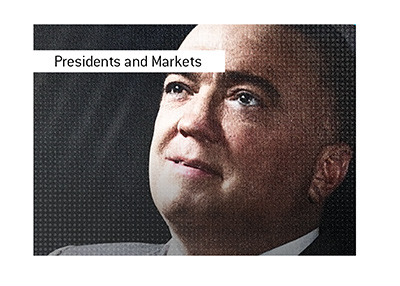President Herbert Hoover Experienced a 35.55% Market Decline in His First Year in Office
 It can be argued that some Presidents step into very favorable situations when they first enter the White House, while others step into some massive headaches.
It can be argued that some Presidents step into very favorable situations when they first enter the White House, while others step into some massive headaches. President Ronald Reagan, for instance, entered the White House when stagflation was rearing its ugly head in the United States. As a result, things weren't exactly smooth in his first year in the White House, as the S&P 500 dropped by nearly 9%. President George W. Bush also stepped into a very tough situation in his first year in office, as the "dot-com bubble" was bursting, and, of course, 9/11 took place. As a result, the S&P 500 dropped 16.76% in his first year in office.
Other Presidents instituted changes that certainly helped spur the markets to higher levels in their first years in office. President Franklin D. Roosevelt and President Trump are two good examples in this regard.
-
President Herbert Hoover might be the biggest example of "wrong place at the wrong time" for a US President, as he took over right at the start of the Great Depression.
President Hoover, who was inaugurated on March 4th, 1929, saw the S&P 500 decline by an eye-watering 33.67% in his first year in office.
President Hoover's first year in office included the stock market crash of October 1929, which set off the start of the Great Depression.
-
The "Great Depression" taking place on President Hoover's watch can't be blamed on him.
Voters at the time, however, were unimpressed with President Hoover's policies to try and combat the Great Depression, which resulted in President Roosevelt winning a decisive victory in 1932. President Roosevelt would end up winning four times, and was so popular that the 22nd Amendment was introduced.
Filed under: General Knowledge



